How can creative practitioners use and engage with archive materials, and develop work as a response?
We are currently running ‘In Our Minds’, a project focused on creating creative responses to records related to mental health held at The National Archives and The University for the Creative Arts Archive (UCA). We want to take you through the creative process, following creative arts students and staff at various stages: from initial thoughts, creation to completion. We hope it will inspire you to do the same.
In Our Minds is a project developed by The University for the Creative Arts Archive (UCA) and The National Archives, with support from the Friends of the National Archives. [ref] 1. We would like to thank Friends of The National Archives for their continued support and championing projects such as this.[/ref]
Please note that this blog contains content that may cause distress.
Why this project?
The purpose of the project is primarily twofold; to highlight the amazing potential of archives to inspire the arts and to highlight mental health related records in The National Archives’ collections and University for The Creative Arts Archives.
The project aims to explore different ways in which mental illness have been represented and (mis)understood in society and culture, and how creative practitioners view and respond to the documents presented.
Why mental health?
In both collections we are keen to highlight underpromoted material, and in The National Archives collections, material you would not generally associate with a government archive.
While the collections have very different remits, mental health was a strong area that linked both, drawing parallels in the collections across time through the universality of the theme.
Exploring possibilities
The possibilities of archives are endless and it particularly struck us when working with staff and students looking at a selection of records related to mental health held at The National Archives and The University for the Creative Arts Archive (UCA Archives) and encouraging creative responses to them.
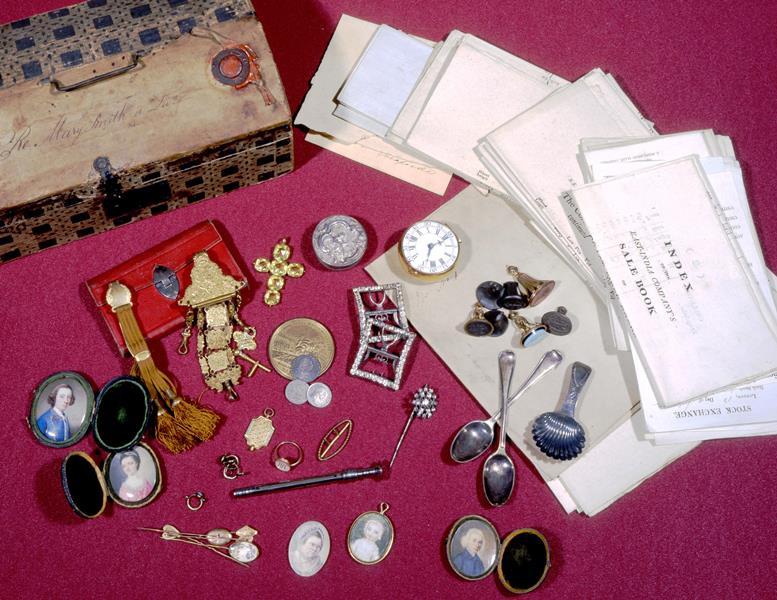
One of the items chosen for the document selection: contents of the jewelry box of Mary Smith, lunatic, 1811 (catalogue reference: C114/190)
On looking at documents held at both archives, postgraduate student Diana said:
‘I was struck by the breadth of material held both at the National Archives and in the Archives at UCA. It was a very diverse range from official documents, images, drawings, photographs, degree show catalogues, personal letters, court proceedings and many many more items.
Some information was the recordings of mundane everyday events – committee-meeting minutes, time-tables. Other texts bore witness to past events, like the records kept on force-feeding suffragettes.
Others were painfully sorrowful – the letter handwritten by the mother who gassed her child while attempting suicide.
Some were unexpected for me – mental health patients detained in psychiatric hospitals dressed neatly in what seemed to be their ‘Sunday best’ posing for photographs.’
Our thoughts on the project and document selection
Through this theme links started to form between, for example, the archive of Tessa Boffin [ref] 2. Tessa Boffin was a photographer specializing in sex and sexuality, and LGBTQ history in 1980s and 1990s. [/ref] to suffrage records that looked at mental health and gender. We were aware from the start how mental health crossed many collections created by various government departments and provided fascinating interactions with other themes, such as class, colonialism, gender and sexuality.
This theme allowed us to pull together collections we would have never though would be relevant to each other. However our purpose as archivists and records specialists was to provide a varied section of records, and then to wait and see what would interest the students and staff from The University for Creative Arts.
Here are a selection of some of the documents selected from both collections
- From the Tim Brennan Archive. Copyright: Tim Brennan ( (catalogue reference: TB/1, UCA Archives)
- From the Working Press Archive. Copyright: Stefan Sczelkun (catalogue reference: WPA/SS/10/2, UCA Archives)
- Othello sequence, from the Bob Godfrey animation archive. Copyright: Bob Godfrey Estate (catalogue reference: Reference: BG/SH, UCA Archives)
- Siegfried Sassoon concern over state of mental health, 1918 (catalogue reference: WO 339/51440, The National Archives)
- Olive Wharry, suffrage movement and mental health (catalogue reference: HO 144/1205/221873, The National Archives)
- Grenada, lunatic asylum (catalogue reference: CO 1069/349, The National Archives)
See the full list of documents selected in the footnote section. [ref] 3. List of documents from The National Archives:
- Siegfried Sassoon concern over state of mental health, 1918. Document reference: WO 339/51440
- Grenada, Lunatic Asylum, 1892, document reference: CO 1069/349 3) Contents of the jewellery box of Mary Smith, lunatic, 1811. Document reference: C 114/190
- First World War representative medical records of servicewomen, Queen Mary Auxiliary Army Corps, 1919. Document reference: MH 106/2208
- Bristol: Plan of the Asylum for ‘Lunatics’ at Brislington House, 1806. Document reference: MPI 1/332/1
- Photograph of female known as Tottie Fay taken at Broadmoor Lunatic Asylum. Document reference: COPY 1/418/70
- Olive Wharry, suffragettes. Letter from the Deputy Medical Officer at Holloway Prison to the Home Office, 1914. Document reference: HO 144/1205/221873
- Sarah petty. Murder, attempted murder and attempted suicide. December 1917. Document reference: CRIM 1/170/2
- Murder of Mr Dadd: Extradition of son, Richard Dadd, from France. Document reference: MEPO 3/47
- Louis Wain cat illustrations. Document references: COPY 1/299 (273); COPY 1/280 (327)
- Selection of illustrations for Horrors of War by Mervyn Peake. Document references: INF 3/647; INF 3/660
List of documents from University for Creative Arts Archive
- Millennium, or Pigs Will be Flying Tonight- War Sequence. Document reference: BG/MM/3/1/18
- Shakespeare’s Music Hall. Document reference: BG/SH
- Signing Off, the final year of Fine Art at Maidstone College of Art, 1989. Document reference: MCOL/10/4
- The State Welfare Project. Document reference: TB/1
- Class, Culture and Identity Conference 1994. Document reference: WPA/SS/10/2
- Ecstatic Antibodies Exhibition at various galleries. Document reference: BOFF/1/3/7 [/ref]
In trying to capture a wider range of documents we explored archive items relating to individuals who were known to have mental illness, for example the artist Richard Dadd (MEPO 3/47), to images of colonial asylums, such as photographs of a Grenada Lunatic Asylum from 1892.
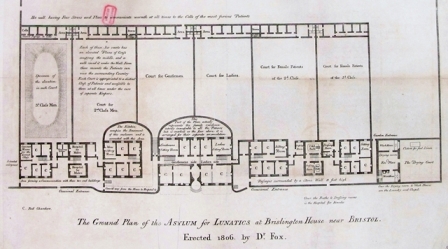
Example of one of the documents in the document selection: plan of the Asylum for Lunatics at Brislington House, Bristol, showing counts for patients’ cells, sitting rooms, entrances, passages and a ‘hot wall’ heated by stoves to warm cells (catalogue reference: MPI 1/332)
This particular map (MPI 1/332) – of the floor plan designs for the Asylum for ‘Lunatics’ at Brislington House, Bristol, from when it was opened in 1806 – clearly shows the intersections between mental health, class and gender. It was built by Dr Edward Long Fox, who was one of the first asylums owners to use a new treatment for the mentally ill known as moral treatment. Fox classified the patients according to social class, as can be seen from the floor plan.
Why did the creative arts practitioners decide to participate?
It was interesting to hear why they decided to participate especially when staff and students came from across a number of disciplines.
Watch this video [ref] 4. Many thanks to Boyce Keay for editing the videos. [/ref] to hear what the participants had to say about the documents and the project.
Narrative and stories
Postgraduate student Sparrow saw that narratives linked both selections of documents:
‘I see stories of personal as well as professional documents… they do have voices, all calling out, and waiting for someone to discover them.”
Students and staff came from a wide range of backgrounds and creative approaches. Considerations around the notion of stories were held in Dr Craig Jordan-Baker’s mind when thinking about the project:
‘If our lives are stories, rather than mere assemblages of random events, feelings and inclinations, then telling stories takes on the rather serious purpose of making sense of lives…it is very easy to see stories as a kind of comfort blanket, a lie we tell ourselves to keep ourselves sane, but this is too simple, because stories are terrible things. Just consider the things we tell stories about. A short perusal through the flickbook of your memory will probably bring up all sorts examples of pain, confusion and injustice that our stories narrate. Against these, making sense may be considered a poor recompense.’
Susan highlights some documents that stood out for her:
‘One particular story of a woman who had murdered her newborn baby and the reports and records that describe her mental state, before and after this period. And a painting by Mervyn Peake examining the Horrors of War, showing a woman bedraggled and bloody, holding a dead baby, which to me could also have been the exact women I had just read about.’
The criminal file on attempted murder and attempted suicide of Sarah Petty (CRIM 1/170/2), highlighted by Susan, is a powerful illustration of multiple affects of the First World War. The woman at the centre of the document is a mother, Sarah Petty, charged with the attempted murder of her child and attempted suicide.
In the file, Sarah’s defence is that husband has been abusive as a consequence of shellshock cause by the First World War. This record reflects both on Sarah’s mental health, her husband’s mental health and the impact it has on their family.
- Sarah Petty, mental health (catalogue reference: CRIM 1/170)
- Horrors of War, Motherhood. Artist Mervyn Peake (catalogue reference: INF 3/649)
Of particular interest to one of the participants was the documents picked out about the suffrage movement and mental health. A reoccurring theme in Home Office records is the state commenting on the mental health of individuals involved, in this instance in relation to Olive Wharry:
‘But in addition to physical deterioration [decline], I consider also her mental state has become more unsatisfactory. It was always realised from the first time she came to Prison, that she was mentally unstable and shewed evidence of mental disability partaking more of the moral than the intellectual type of disorder. Her irrational views on social things in general- her lack of moral fibre, diminished will power combined with obstinacy and her habits of cunning and deceit, all point to the fact that she cannot be credited with a full measure of responsibility for her actions.’
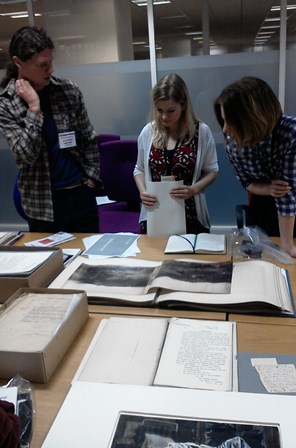
Looking at some of the document selection for initial thoughts and ideas at The National Archives
And the dual impact of the state on individuals mental health – particularly through force-feeding, which is captured in daily reports on suffragette prisoners.
We will leave you with this final thought from Diana, which we thought was fitting as we believe not only the documents themselves are inspiring but also the nature of archives itself:
“I found the grandeur of the national archives interesting, and there was something about the nature of the way things were ‘kept’.
Strong rooms, check in desks, check out desks. And boxes and boxes and boxes.
I am still thinking about this idea of archives as ‘keepers’. A theme I want to pursue in response to what I have experienced on my visits.’
Interested to find out more?
Keep a look out of future blog posts In Our Minds. Interested in finding out more about the special collections at UCA? See UCA Archives blog pages.
If you have used archives as part of your creative practice we’d love to hear about it. Please let us know by replying to this blog.
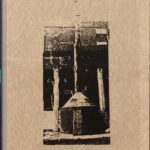
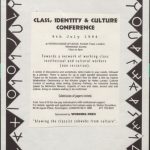
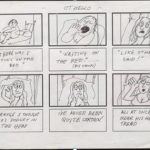
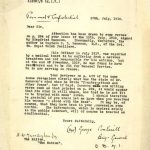
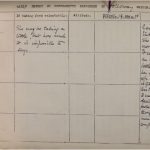
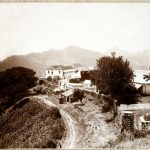
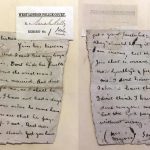
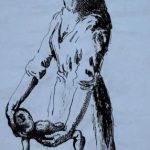
[…] This touring exhibition in partnership with The National Archives will show creative work produced by UCA students and staff in response to records related to mental health held at The National Archives and UCA Archives and Special Collections. Full details about the project can be found on the National Archives blog here. […]
[…] This touring exhibition in partnership with The National Archives shows creative work produced by UCA students and staff in response to records related to mental health held at The National Archives and UCA Archives and Special Collections. […]
[…] The talk will include contributions from UCA students and staff who will talk about their experiences producing creative work in response to records related to mental health held at The National Archives and UCA Archives and Special Collections for the In Our Minds Exhibition. There will also be an opportunity to see the In Our Minds touring exhibition in partnership with The National Archives. Full details about the project can be found on The National Archives blog. […]
[…] Blog 1: the background to project […]